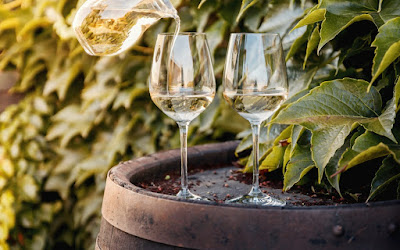What exactly is a Pét-Nat wine?
The term comes from Pétillant Naturel, which in French designates slightly sparkling natural wines. The term pét-nat therefore refers to the style and way in which these wines have been made, thus becoming perhaps the most important trend in the world of wine, consistent with natural wines. You can find them white, red, and rosé, more or less carbonated, but it is very difficult to find them sweet. We will see the reason why Pét-nat is not a sweet wine later.
Unique bottle fermentation, a modern method?
If we take a trip back in time we can imagine that the first sparkling wines were a product of chance (like the great discoveries in history). When winter arrived in cold production areas, the decrease in temperature stopped the fermentation process, leaving the yeasts inactive. Some of these batches were bottled under these conditions, then with the arrival of spring and its better conditions the activity of the yeast resumed inside the bottle. The alcoholic fermentation process involves the consumption of sugar (due to the action of yeast) and the production of alcohol and carbon dioxide (gas), among others. In normal fermentations this gas must be vented to the outside of the containers (tanks, amphorae, barrels, etc.), but when it is produced inside the bottle it inevitably generates an increase in pressure and its consequent incorporation into the wine, resulting in what we know today. like sparkling wine.
This method of making natural sparkling wines is called the Ancestral Method. This was clearly a chance find and long considered a defect of the wine and a nightmare for the producer. However, some of them dedicated many harvests to recreating and improving this randomly discovered phenomenon. In this way, they learned to control fermentations and choose the moment of bottling to harmonize the final result, as well as developing a closure that would prevent accidental opening of the bottle.
Nowadays, pét-nat wines are made following this ancestral system as a source of inspiration where the fermenting wine goes directly into the bottle without any type of addition. Once the fermentation process is finished, the remains of yeast and other substances remain inside. of the bottles causing a certain turbidity, a characteristic of this type of wine.
Why is it difficult to find sweet Pet-nat wines?
Pét-nat wines can be white, rosé or red, generally young from the vintage, originally from cold regions, which have lower alcohol concentrations, although today with adequate temperature control it is possible to make them in any wine-growing area.
They are generally not sweet wines or have a very low level of residual sugar, depending on the technique used and the level of gas dissolved in the wine they can be somewhat sparkling to very sparkling. As an exterior and distinctive characteristic of these wines, we find that most of them have a closure with a metal lid that ensures their storage and sale, which is important when you buy wine online.
We must remember that sugar is the perfect element for the development of microorganisms. Knowing that it is a natural drink and that it does not undergo stabilizing treatments, we can imagine that the probability of finding bottles with deviations increases considerably, understanding this phenomenon as a great disadvantage. It is because of this fragility that sugar confers that Pet-Nat are not sweet wines.
Another important reason is that an excess of sugar in the bottle can generate excess gas and consequently great difficulty in controlling its opening and translate into large amounts of foam and the possible loss of wine, especially noticeable at high temperatures when serving.
The first productions were completely wild since the wine was not subjected to any type of disgorgement or stabilization, being faithful to the spirit of natural wines made with minimal intervention seeking the maximum expression of the terroir. Those bottles were, and still are, a Russian roulette in which the wine could have evolved in a totally different direction or another, pleasing or displeasing. This is also one of the biggest attractions for lovers of this style, they are surprising and fun, fresh and light, always remembering the fruit but accompanied by the positive contributions of the yeast lees.
At the same time we can find bottles that describe different defects developed during or after bottle fermentation. These are defects so marked and so strong that their ingestion is impossible. The probability of finding a bottle with unpleasant aromas and sensations makes this style of wine focus on a particular consumer, surely a lover of new sensations, willing to take risks and be surprised.
The last decade has seen more civilized elaborations, although less authentic for some purists of this style. These are pét-nat wines subjected to procedures to eliminate sediments and avoid destabilization during the sales process and give the possibility to buy wine online without so many risks.
Pét-nat and modernity
The enjoyment of Pét Nat is usually found at the tables of bold consumers and curious, free and informal oenophiles, thus demonstrating that the world of wine, like everything in life, has its rebellious and unstructured side. It does not surprise us then that today this style of wine is already a recurring search for online wine stores, also taking advantage of the advantage of this online wine delivery scheme. The tool par excellence used by this style of wine to find and captivate its followers is the use of extravagant designs that escape the traditional logic of the rest of the wines and can be easily recognizable, both in common stores and in online wine stores from all over the world.
Sweet wines vs. pet nat
Pet Nat are perhaps a more bohemian alternative to sweet wines for those new to wine who are curious. What we cannot deny is that they are already a characteristic member of the natural wine fan club.




Comments
Post a Comment